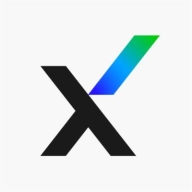

Trellix Endpoint Detection and Response (EDR) and Microsoft Defender for Endpoint compete in the EDR category. Microsoft Defender is seen to offer superior features and easier deployment, whereas Trellix stands out for customer service and pricing.
Features: Trellix EDR is recognized for its comprehensive threat detection capabilities, customizable alerts, and competitive pricing. Microsoft Defender for Endpoint integrates well with other Microsoft products, uses advanced machine learning insights, and provides a more robust feature set.
Room for Improvement: Trellix EDR could improve its user experience, reporting functionalities, and usability. Microsoft Defender for Endpoint users suggest better customer support, a more intuitive setup process, and enhancements in documentation.
Ease of Deployment and Customer Service: Trellix EDR offers a straightforward deployment process and exceptional customer service. Microsoft Defender for Endpoint benefits from efficient deployment due to existing Microsoft infrastructure, though it faces criticisms regarding customer service response times.
Pricing and ROI: Trellix EDR is perceived as a cost-efficient option with a good return on investment. Microsoft Defender for Endpoint is seen as more expensive but offers compelling value through its extensive features and integration benefits.
Without detection and protection measures, organizations would face substantial payments and reputational damage, including the necessity to inform customers about data breaches, potentially leading to loss of business.
We have seen a return on investment when using Microsoft Defender for Endpoint, as it saves labor by reducing the need for staff to focus on it.
The biggest return on investment for me when using Microsoft Defender for Endpoint is the time saving.
The level-one support seems disconnected from subject matter experts.
I rate Microsoft support 10 out of 10.
Due to our size, we don't have access to direct technical support, but the knowledge base, Microsoft Learn, and the articles available are really good.
I have contracted support and also have an operating control so I can get various types of support.
We managed to scale it out in a short amount of time, with two months of planning and three months of implementation on 10,000 computers.
Microsoft Defender for Endpoint is scalable enough to handle various devices across environments, whether they are laptops, Android devices, or operating in hybrid environments.
Compatibility is its main feature.
I haven't seen any outages with Microsoft.
I rate Defender 10 out of 10 for stability.
Defender for Endpoint is extremely stable.
Repeated interactions are necessary due to Level One's lack of tools and knowledge, hindering efficient problem-solving and negatively impacting our experience with Microsoft support.
In contrast, competing products offer reduced pricing for long-term commitments, which makes it difficult for us in that environment.
We use Microsoft partners to help govern the platform, and as part of an alliance, we want to gather data from each tenant and combine them for a complete view.
I am seeing, for workflows, some sort of ethical hacking to test our environment.
Given our extensive Microsoft licensing, transitioning to Defender for Endpoint did not affect licensing costs.
It costs $15 per VM for the P2 plan, which is seen as affordable for customers.
The pricing, setup, and licensing were very easy and simple.
Defender for Endpoint's coverage across different platforms in our environment is pretty good. We have devices running Linux, Mac OS, Windows, iOS, and Android. It covers all of them.
Microsoft Defender for Endpoint provides a unified management interface allowing customers to manage their on-premises and hybrid infrastructures from a single pane.
One of the best features of Microsoft Defender for Endpoint is its database for identifying zero-day attacks or malware attacks.
I have spent efforts on training our managers and others - what can software do if the knowledge base is low?
| Product | Market Share (%) |
|---|---|
| Microsoft Defender for Endpoint | 9.8% |
| Trellix Endpoint Detection and Response (EDR) | 1.2% |
| Other | 89.0% |


| Company Size | Count |
|---|---|
| Small Business | 79 |
| Midsize Enterprise | 34 |
| Large Enterprise | 87 |
| Company Size | Count |
|---|---|
| Small Business | 11 |
| Midsize Enterprise | 3 |
| Large Enterprise | 9 |
Microsoft Defender for Endpoint is a comprehensive security solution that provides advanced threat protection for organizations. It offers real-time protection against various types of cyber threats, including malware, viruses, ransomware, and phishing attacks.
With its powerful machine-learning capabilities, it can detect and block sophisticated attacks before they can cause any harm. The solution also includes endpoint detection and response (EDR) capabilities, allowing organizations to quickly investigate and respond to security incidents. It provides detailed insights into the attack timeline, enabling security teams to understand the scope and impact of an incident.
Microsoft Defender for Endpoint also offers proactive threat hunting, allowing organizations to proactively search for and identify potential threats within their network. It integrates seamlessly with other Microsoft security solutions, such as Microsoft Defender XDR, to provide a unified and holistic security approach. With its centralized management console, organizations can easily deploy, configure, and monitor the security solution across their entire network.
Microsoft Defender for Endpoint is a robust and scalable security solution that helps organizations protect their endpoints and data from evolving cyber threats.
Reduce the time to detect and respond to threats. Trellix EDR helps security analysts quickly prioritize threats and minimize potential disruption.
Guided investigation automatically asks and answers questions while gathering, summarizing, and visualizing evidence from multiple sources—reducing the need for more SOC resources.
Cloud-based deployment and analytics enables your skilled security analysts to focus on strategic defense, instead of tool maintenance. Benefit from implementing the right solution for you.
We monitor all Endpoint Detection and Response (EDR) reviews to prevent fraudulent reviews and keep review quality high. We do not post reviews by company employees or direct competitors. We validate each review for authenticity via cross-reference with LinkedIn, and personal follow-up with the reviewer when necessary.